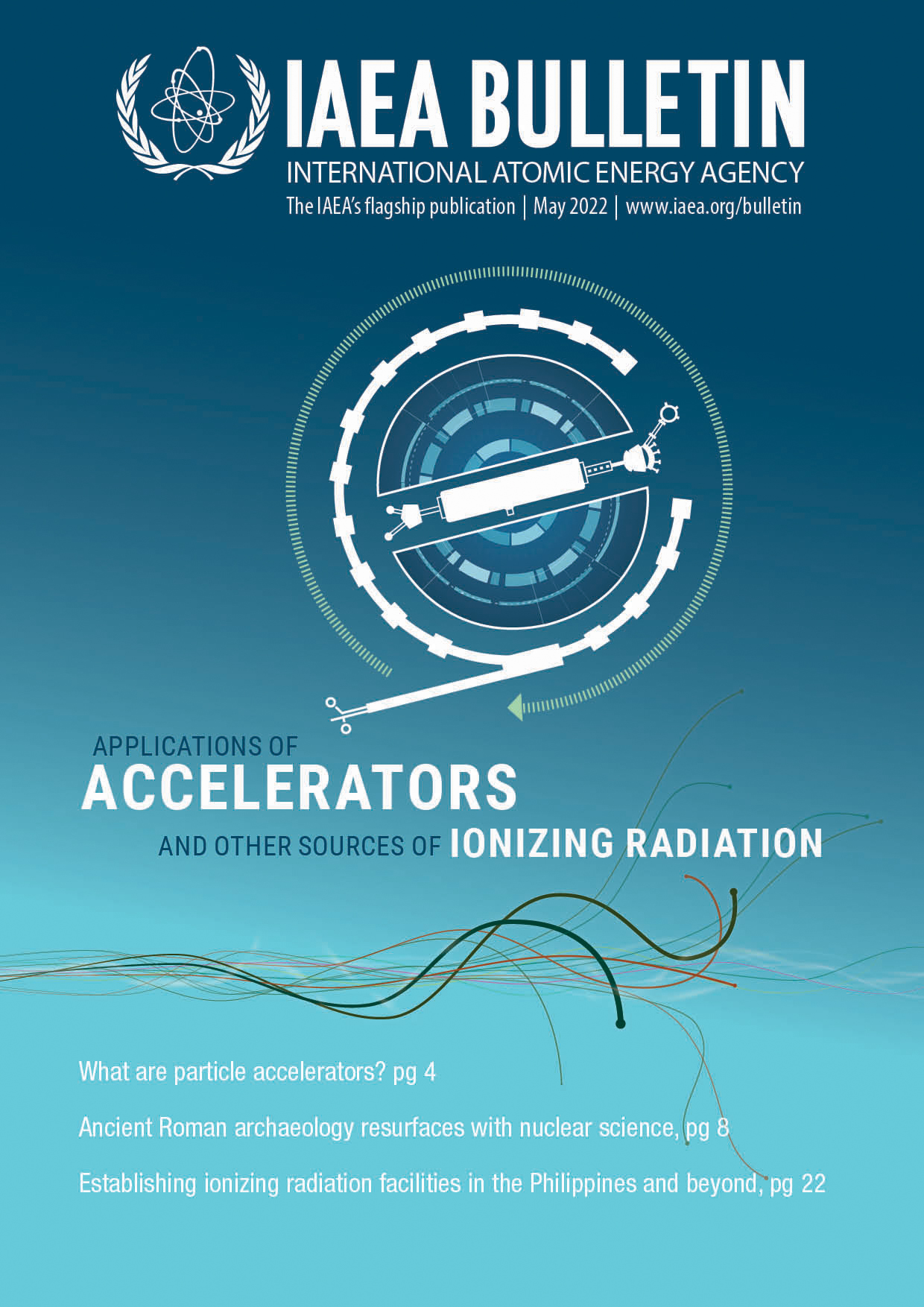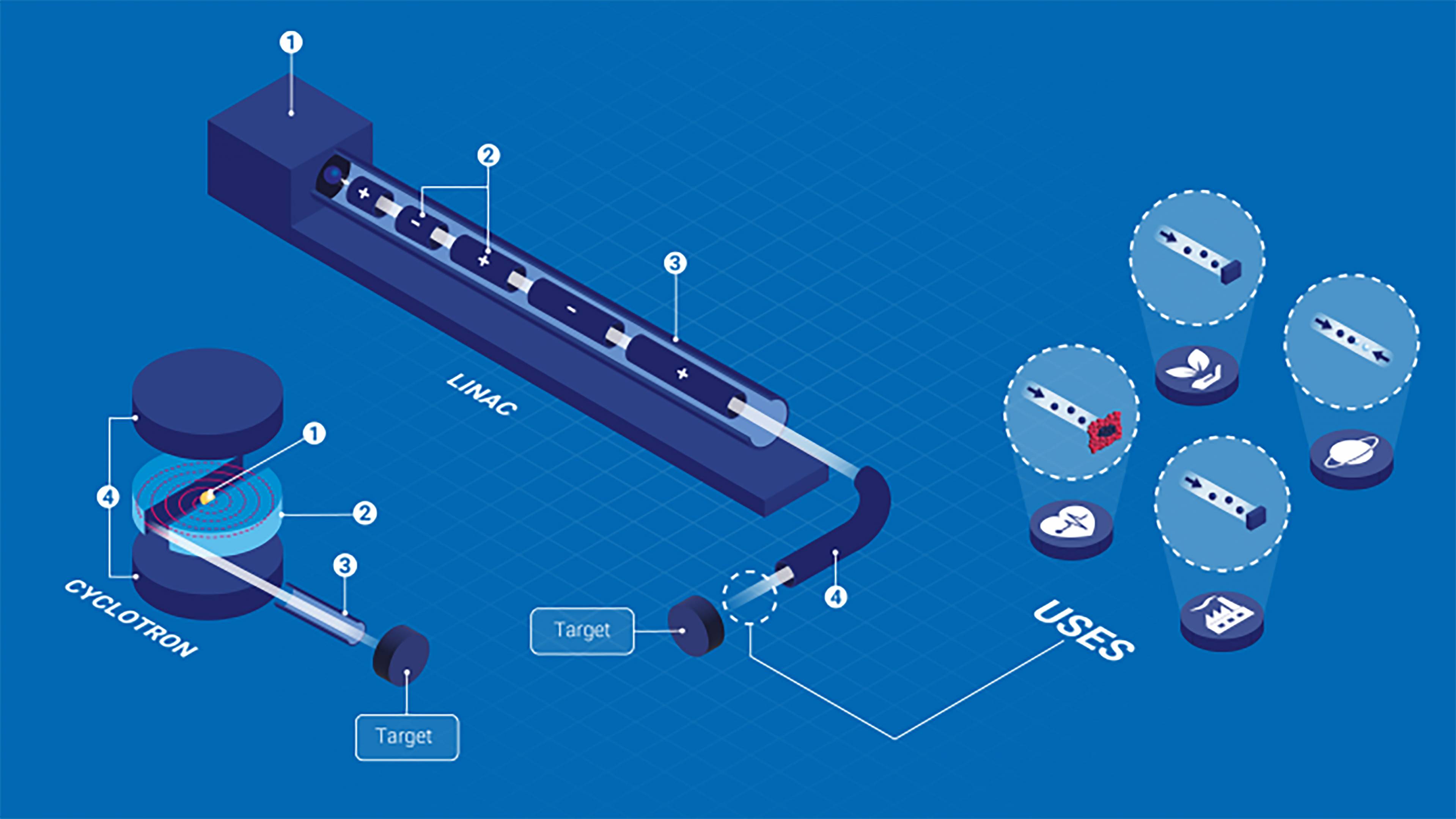Types of particle accelerators
ION IMPLANTERS
Ion implanters are widely used in industry to, for example, make materials more resistant to damage from wear and usage. Around 12 000 ion implanters around the world help fabricate semiconductors for smartphones and solar panels. and harden metal, ceramic and glass finishes. Ion implanters can also improve the reliability of materials used for medical implants.
ELECTRON BEAM ACCELERATORS
There are almost 10 000 electron beam accelerators in operation globally. They can, for example, help make materials more durable in extreme temperatures, or resistant against chemicals. Electron beams are also used for sterilizing medical products and foods, and to disinfect sewage water. They are used widely in the automotive and aerospace industries, for machine construction, and by medical product manufacturers.
LINACS
Linear accelerators (linacs) may vary in length, from a couple of metres to a few kilometres long. Many of them are used in scientific research. Medical linacs installed at hospitals, create bursts of X-rays that are guided towards tumour cells to destroy them. There are about 1000 medical linacs operating worldwide.
CYCLOTRONS
More than 1200 cyclotrons around the world create proton or deuteron beams for medical uses. They produce radioisotopes that are used for medical imaging to diagnose and treat cancers. Many cyclotrons are located at hospitals for producing radiopharmaceuticals with short-lived radioisotopes.
SYNCHROTRONS
The more than 70 synchrotrons worldwide are the giants among particle accelerators. They are used for scientific research and help us understand the fundamental laws of our universe. Scientists use synchrotrons to study chemistry, biomedicine, natural and cultural heritage, the environment, and much more.
ELECTROSTATIC ACCELERATORS
Electrostatic accelerators, notably tandem accelerators, are less expensive, and scientists use them to investigate material properties, monitor the environment, support biomedical research, study cultural heritage objects, and more. Experts expect the current 300 machines worldwide to grow in number over the coming years.
Today, there are more than 20 000 accelerators in operation worldwide.

